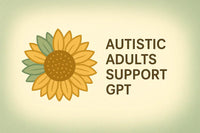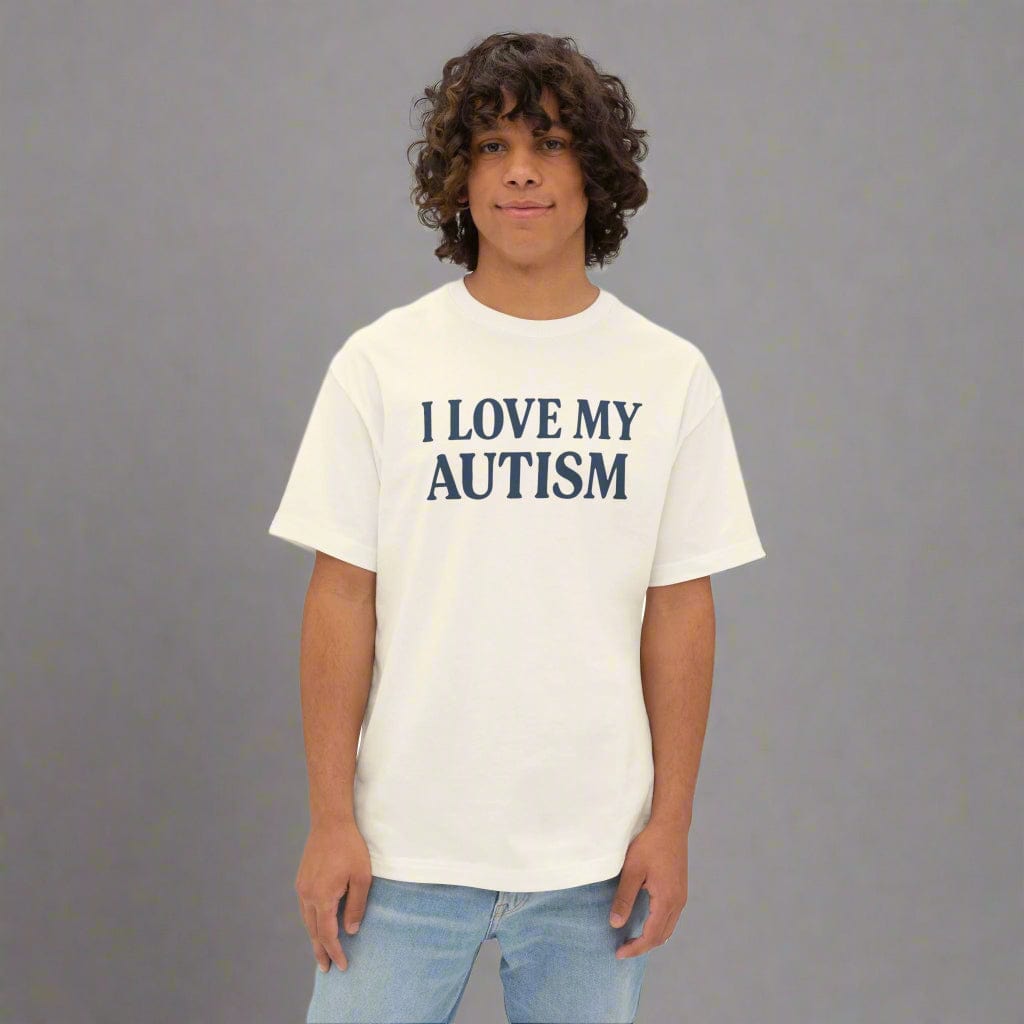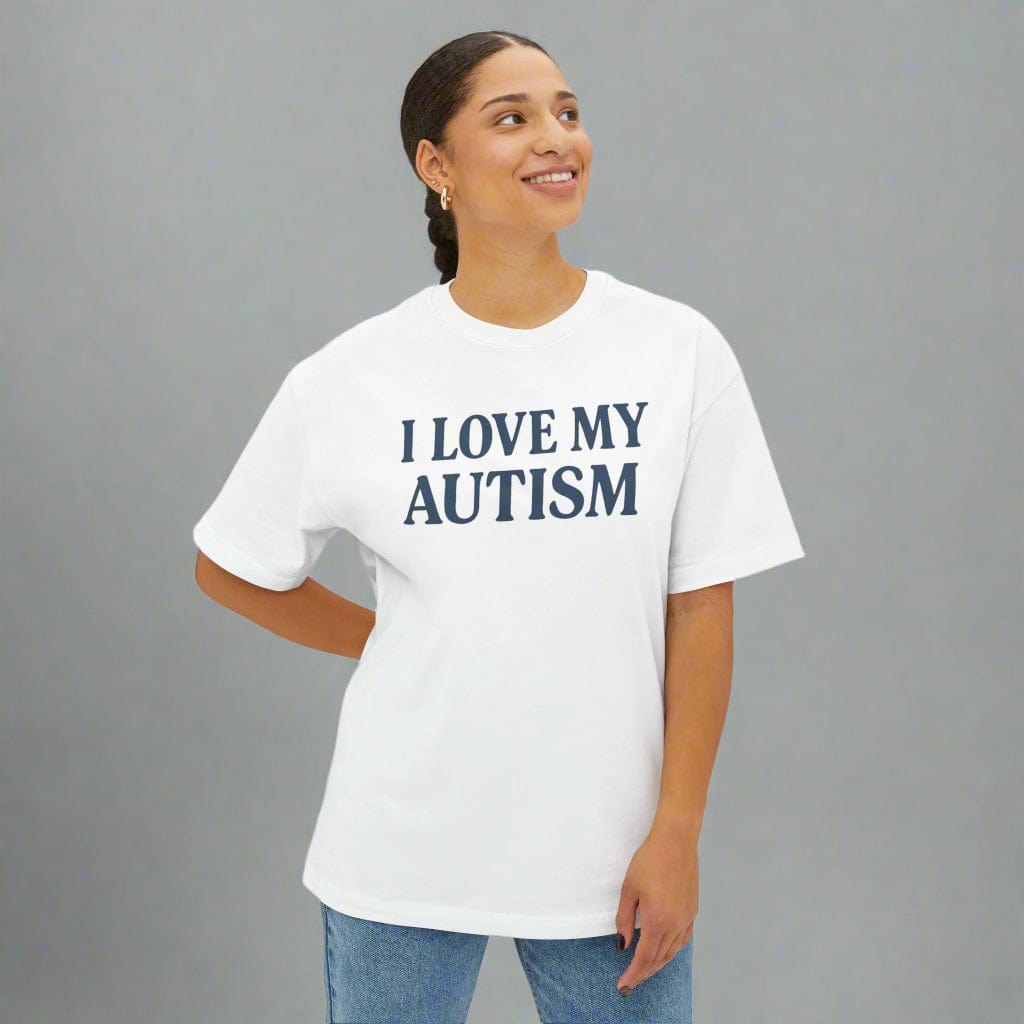Applied Behavior Analysis for Individuals with ASD Examined

Written by the HeyASD Editorial Team
Autism Spectrum Disorder (ASD) is a complex neurodevelopmental condition that affects individuals in various ways, influencing their social interactions, communication skills, and behavior. While there is no known cure for ASD, there are evidence-based treatments available to support individuals with autism and improve their quality of life. One such effective intervention is Applied Behavior Analysis (ABA).
In this article, we will explore the principles of ABA, its benefits for individuals with ASD, the role of ABA therapists, commonly used ABA techniques, early intervention strategies, criticisms and controversies, success stories, and resources for families seeking ABA support.

Understanding Applied Behavior Analysis (ABA)
Definition of ABA
Applied Behavior Analysis (ABA) is a scientific approach that focuses on understanding how behavior works and how it can be modified or shaped to achieve socially significant outcomes. ABA is based on the principle that behavior is influenced by its consequences, and by applying systematic interventions, desired behaviors can be increased while challenging behaviors can be decreased.
Principles of ABA
ABA operates on several key principles:
- Positive Reinforcement: ABA utilizes positive reinforcement to increase the likelihood of desired behaviors. By providing rewards or incentives, individuals are motivated to engage in those behaviors.
- Prompting and Prompt Fading: ABA employs prompts or cues to help individuals learn and perform desired behaviors. These prompts are gradually faded out as the individual becomes more proficient.
- Generalization: ABA aims to teach skills that can be applied across different environments, ensuring that learned behaviors are not limited to specific situations.
- Data-Driven Decision Making: ABA relies on data collection and analysis to monitor progress, make informed decisions, and modify interventions as needed.

Benefits of Applied Behavior Analysis for Autism Spectrum Disorder (ASD)
ABA has demonstrated significant benefits for individuals with ASD, empowering them to reach their full potential. Some of the key benefits include:
Improving social skills
Many individuals with ASD face challenges in social interactions. ABA interventions target social skills development by teaching appropriate social behaviors, such as initiating and maintaining conversations, interpreting non-verbal cues, and understanding social norms. ABA helps individuals with autism navigate social situations with confidence and improve their overall social competence.
Enhancing communication abilities
Communication difficulties are common among individuals with ASD. ABA interventions focus on improving communication skills, ranging from basic language acquisition to complex verbal and non-verbal communication. By using ABA techniques such as discrete trial training, individuals with autism can develop effective communication strategies and express their needs, thoughts, and emotions more effectively.
Reducing problem behaviors
Challenging behaviors, such as tantrums, self-injury, or aggression, can significantly impact the lives of individuals with ASD and their families. ABA employs functional behavior assessments to identify the underlying causes of these behaviors and develops interventions to replace them with more appropriate alternatives. Through positive reinforcement and behavior modification techniques, ABA helps reduce problem behaviors, leading to a more harmonious and fulfilling life.
Promoting independent living skills
ABA recognizes the importance of teaching individuals with ASD essential life skills to foster independence. From self-care routines to functional academics and vocational skills, ABA interventions address the specific needs of individuals at different stages of development. By breaking down complex skills into manageable steps and utilizing reinforcement strategies, ABA enables individuals with autism to acquire the skills necessary for independent living.

The Role of ABA Therapists in Autism Treatment
ABA therapists play a crucial role in delivering effective autism treatment. These professionals possess the necessary qualifications and training to design and implement individualized ABA programs tailored to the unique needs of each individual. The responsibilities of ABA therapists include:
Qualifications and training
ABA therapists typically hold relevant degrees in psychology, education, or a related field. They undergo specialized training in ABA principles, behavior assessment, data collection, and intervention strategies. Certification programs, such as the Board Certified Behavior Analyst (BCBA) certification, ensure that ABA therapists meet rigorous standards of competence and ethical practice.
Creating individualized treatment plans
ABA therapists conduct comprehensive assessments to identify the strengths, weaknesses, and specific goals of individuals with ASD. Based on this assessment, they develop individualized treatment plans that outline the target behaviors, intervention strategies, and progress measurement methods. These plans are regularly reviewed and modified to ensure ongoing progress.
Implementing interventions
ABA therapists directly implement the planned interventions, working closely with individuals with ASD to teach and reinforce targeted behaviors. They utilize a variety of ABA techniques, such as discrete trial training, natural environment training, functional communication training, and pivotal response training, to address specific goals and objectives.
Monitoring progress
ABA therapists continuously collect data on the targeted behaviors, objectively measuring progress and making data-driven decisions. They analyze the data to identify trends, evaluate the effectiveness of interventions, and make adjustments as needed. Regular progress reports and meetings with families and other professionals involved in the individual's care ensure transparency and collaboration.
By collaborating with families, educators, and other professionals, ABA therapists create a comprehensive support system to facilitate consistent progress and maximize the outcomes of ABA therapy.

ABA Techniques Used in Autism Treatment
ABA incorporates various evidence-based techniques to address the unique needs of individuals with autism. Some commonly used techniques include:
Discrete Trial Training (DTT)
DTT involves breaking down skills into small, manageable steps and systematically teaching them in a structured manner. It utilizes prompts, reinforcement, and repetition to promote skill acquisition. DTT is particularly effective for teaching new skills, such as language, imitation, and academic concepts.
Natural Environment Training (NET)
NET takes advantage of the individual's natural environment to teach and generalize skills. It focuses on embedding teaching opportunities into everyday routines and activities, making learning more meaningful and functional. NET promotes generalization by teaching skills in multiple environments and using a variety of materials.
Functional Communication Training (FCT)
FCT targets the development of appropriate communication skills as an alternative to challenging behaviors. By teaching individuals effective ways to express their needs and wants, FCT reduces the reliance on problem behaviors and enhances communication abilities. This technique utilizes reinforcement to strengthen desired communication responses.
Pivotal Response Training (PRT)
PRT emphasizes the development of pivotal skills, such as motivation, self-management, and initiation. By targeting these pivotal areas, PRT aims to produce widespread improvements in various domains, including communication, socialization, and play skills. PRT utilizes natural reinforcers and incorporates child choice and control into the learning process.
These ABA techniques, among others, provide individuals with ASD the opportunity to learn and generalize skills across different settings, facilitating meaningful progress in their development.

ABA and Early Intervention for Autism
Early intervention is critical in maximizing the potential outcomes for individuals with ASD. Research consistently demonstrates that early identification and intervention significantly improve long-term outcomes. ABA plays a vital role in early intervention by:
Importance of early intervention
Early intervention during the critical developmental years can address core deficits in social communication, reduce problem behaviors, and enhance learning opportunities. ABA interventions tailored to the needs of young children can have a profound impact on their overall development and pave the way for successful transitions into school and later stages of life.
Early signs of autism
Recognizing early signs of autism is crucial for early intervention. Common early signs may include lack of eye contact, delayed or atypical language development, repetitive behaviors, and social withdrawal. By identifying these signs early on, parents and professionals can seek appropriate evaluation and intervention services promptly.
ABA strategies for early intervention
ABA strategies employed in early intervention focus on building foundational skills, such as imitation, play, communication, and social interaction. Interventions are delivered in naturalistic settings, targeting skills relevant to the child's daily life. Parent training and involvement are integral components of early intervention, empowering parents to support their child's development consistently.
By implementing ABA techniques in early intervention programs, children with autism can make significant strides in their development, setting a strong foundation for future growth and independence.

Criticisms and Controversies Surrounding ABA
While ABA has proven to be an effective intervention for individuals with ASD, it is not without criticisms and controversies. Some common concerns include:
Ethical concerns
Critics argue that certain ABA practices, such as the use of aversive techniques or overly rigid compliance training, can be unethical and potentially harmful. It is important to note that the field of ABA has evolved significantly, emphasizing positive reinforcement and person-centered approaches. Ethical guidelines and professional standards guide the practice of ABA therapists, ensuring the well-being and dignity of individuals with ASD.
Lack of generalization
One critique of ABA is its limited focus on generalizing learned skills to real-world settings. ABA interventions primarily take place in controlled environments, and individuals may struggle to transfer the acquired skills to different contexts. To address this concern, ABA therapists employ strategies specifically targeting generalization, such as incorporating natural environment training and community-based activities.
Limited focus on emotions
Some argue that ABA's emphasis on observable behavior may overlook the emotional experiences of individuals with ASD. While ABA traditionally focuses on changing behavior, contemporary approaches recognize the importance of addressing emotional well-being and incorporating strategies to support emotional regulation and self-awareness.
It is crucial to consider these criticisms and engage in ongoing dialogue to ensure that ABA interventions remain person-centered, culturally sensitive, and responsive to the unique needs of individuals with ASD.
Success Stories of ABA in Autism Treatment
Numerous success stories illustrate the positive impact of ABA in autism treatment. These stories highlight the remarkable progress made by individuals with ASD, ranging from significant improvements in communication and social skills to enhanced independence and quality of life. Personalized ABA interventions, implemented consistently and with family involvement, have proven transformative for individuals with autism, unlocking their potential and facilitating meaningful connections with the world around them.
ABA Resources and Support for Families
Families seeking ABA support for their loved ones with ASD can access various resources and support networks:
Finding qualified ABA providers
To find qualified ABA providers, families can consult professional organizations, such as the Behavior Analyst Certification Board (BACB), which provides a directory of certified behavior analysts. Local autism support organizations, educational institutions, and healthcare providers may also offer recommendations for reputable ABA providers in the community.
Accessing insurance coverage
Many insurance plans cover ABA therapy for individuals with ASD. Families should review their insurance policies and seek guidance from insurance providers to understand the coverage details, including the scope, duration, and requirements for ABA services. ABA providers often assist families with insurance-related paperwork and ensure compliance with coverage guidelines.
Support groups and online communities
Joining support groups and online communities can provide valuable emotional support, practical advice, and shared experiences. Families can connect with other caregivers and individuals with ASD, exchange information, and gain insights into navigating the challenges and triumphs of ABA therapy. Online platforms, such as forums and social media groups, offer accessible avenues for connection and support.
Join Hundreds of Autistic Adults Feeling
More Comfort in Their Own Skin
Use code WELCOME10 for 10% off your first order.
Start Your Comfort JourneyConclusion
Applied Behavior Analysis (ABA) has emerged as a leading intervention for individuals with Autism Spectrum Disorder (ASD). By focusing on behavior modification, ABA unlocks the potential of individuals with autism, enhancing their social skills, communication abilities, and independence. ABA therapists play a crucial role in developing individualized treatment plans, implementing evidence-based techniques, and monitoring progress. While criticisms and controversies exist, ongoing advancements in the field address these concerns and promote ethical and effective ABA practice. Through ABA, individuals with ASD can thrive, and families can access the necessary resources and support for their journey.
Frequently Asked Questions (FAQs)
Is ABA the only effective therapy for autism? ABA is one of the most widely recognized and researched interventions for autism, with strong empirical support. However, there are other evidence-based therapies and interventions that can be beneficial, such as speech therapy, occupational therapy, and social skills training.
How long does ABA therapy typically last? The duration of ABA therapy varies based on individual needs and goals. Some individuals may benefit from short-term, focused interventions, while others may require ongoing support for an extended period. ABA therapists work with families to develop individualized treatment plans that outline the expected duration.
Can ABA be used for adults with autism? Absolutely. ABA techniques and principles can be effectively applied to individuals of all ages, including adults with autism. ABA can address a wide range of skills and behaviors, supporting individuals in various aspects of their lives.
Are there any side effects of ABA therapy? ABA therapy, when implemented by qualified professionals, is generally safe and free from significant side effects. The focus on positive reinforcement and individualized interventions aims to enhance well-being and improve quality of life for individuals with autism.
How can I find a reputable ABA therapist for my child? You can start by consulting with your child's pediatrician, local autism support organizations, or educational institutions for recommendations. The Behavior Analyst Certification Board (BACB) provides a directory of certified behavior analysts that can assist you in finding qualified ABA therapists.
Is ABA covered by insurance? Many insurance plans offer coverage for ABA therapy for individuals with ASD. It is important to review your insurance policy and communicate with your insurance provider to understand the coverage details, requirements, and limitations.
Can ABA therapy be provided in school settings? Yes, ABA therapy can be provided in school settings. Individualized Education Programs (IEPs) can incorporate ABA strategies to support the educational needs of students with autism. Collaboration between ABA therapists, educators, and support staff is essential to ensure consistency and maximize outcomes.
Is ABA a cure for autism? ABA is not a cure for autism. It is an evidence-based intervention aimed at improving skills, reducing challenging behaviors, and enhancing the quality of life for individuals with ASD. The goal of ABA is to help individuals reach their full potential and lead fulfilling lives.
On This Page
Frequently asked questions
What is Applied Behavior Analysis (ABA) and how does it support autistic individuals?
How can ABA therapy help improve communication and social skills in people with ASD?
What should I expect from an ABA therapist during autism behavior intervention?
How does early intervention with ABA benefit young children showing signs of autism?
Are there sensory-friendly products, like calming blankets or sensory tools, that complement ABA therapy at home?
How can families access disability support services to help with ABA therapy and autism care?
What are some sensory-friendly living tips that can make daily life easier for autistic individuals?
How do ABA therapists ensure that learned skills generalize to real-world settings?
Can Autism-themed decor or comfortable clothing, such as t-shirts, support a positive environment during therapy sessions?

About the HeyASD Editorial Team
Autistic‑owned • Values‑led • Sensory‑friendly design
We are autistic creators, writers, and advocates dedicated to producing resources that are practical, sensory-aware, and grounded in lived experience. Our mission is to make information and products that support the autistic community accessible to everyone, without jargon or condescension. Learn more about our team.
This article is written from lived autistic experience and an evidence-aware perspective. It is for general informational purposes only and should not be taken as medical, legal or therapeutic advice.
Always consult a qualified clinician or occupational therapist for individual needs and circumstances.

About Our Autism Blog
HeyASD isn’t just a store, it’s a calm, supportive space created by and for autistic adults. Our blog shares sensory-friendly tips, identity-affirming stories, and heartfelt resources for navigating life as an autistic person. Whether you're late-diagnosed, exploring your needs, or supporting someone you love, you're welcome here.
Thank you for reading. We hope these resources bring comfort and clarity.




































